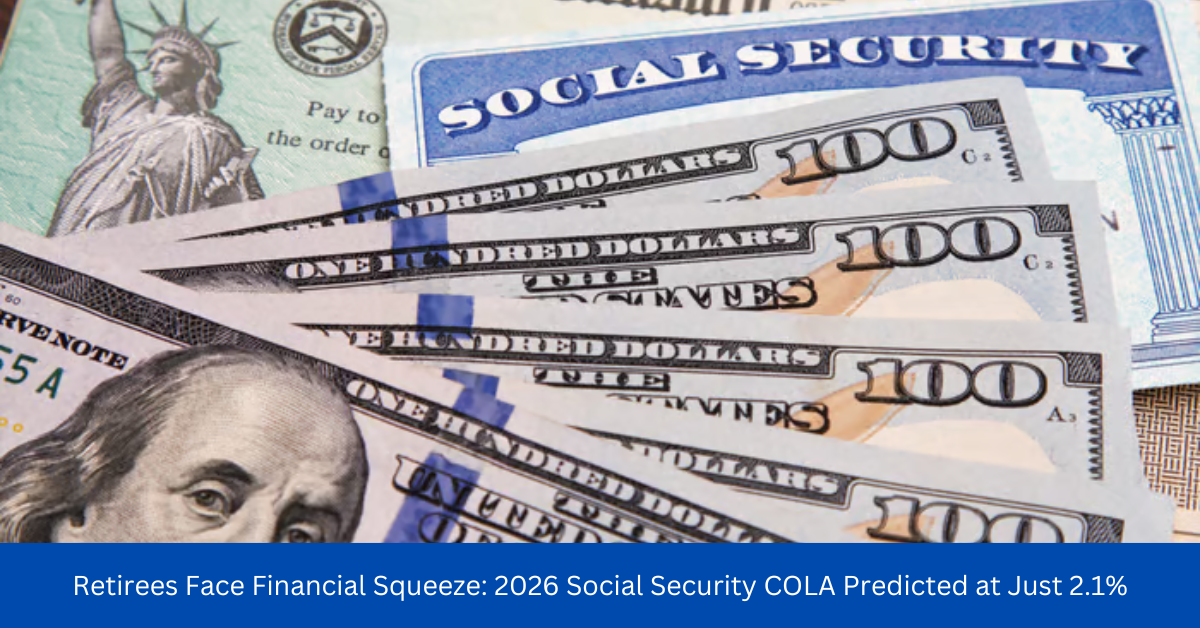An early prediction for next year’s Social Security Cost of Living Adjustment (COLA) suggests that retirees may face financial challenges ahead. According to The Senior Citizens League (TSCL), a non-partisan advocacy group, the estimated COLA for 2026 is expected to be around 2.1%. This forecast is based on data from the Bureau of Labor Statistics’ Consumer Price Index for Urban Wage Earners and Clerical Workers (CPI-W), which tracks inflation trends.
A Declining Trend in COLA Increases
The predicted 2.1% adjustment marks a continued decline in COLA increases since the peak of 8.7% in 2023. In 2024, the COLA dropped to 3.2%, and in 2025, it fell further to 2.5%. If the 2026 projection holds, it would represent the lowest adjustment since 2021, when retirees received only a 1.3% increase.
Inflation May Be Slowing, but Seniors Are Struggling
Shannon Benton, Executive Director of TSCL, warns that while inflation appears to be cooling, this does not necessarily translate to improved financial security for retirees.
“Inflation slowing down doesn’t mean that seniors are catching up. It’s essential that Congress acts quickly to fix years of sub-par COLAs and help give seniors the quality of life they deserve,” Benton said.

One potential policy shift that could help retirees is former President Donald Trump’s proposed plan to eliminate taxes on Social Security benefits. Benton emphasized that the current tax thresholds for Social Security were established in the 1980s and have not been adjusted for inflation, placing an increasing financial burden on retirees.
Seniors Depend Heavily on Social Security
TSCL survey data shows that 67% of seniors rely on Social Security for more than half of their income. Although lower inflation rates mean that prices are rising at a slower pace, it does not mean costs are decreasing. This continues to put pressure on seniors who are already struggling to make ends meet.
“This leaves many seniors facing a budget shortfall. According to data from TSCL’s 2024 Senior Survey, 62% of older Americans worry that their retirement income won’t even cover essentials like groceries and medical bills,” TSCL reported.
How COLA Is Calculated
The Social Security Administration determines COLA based on the CPI-W. The calculation compares the average CPI-W for the third quarter (July, August, and September) of the current year with the same period of the previous year. If there is an increase, Social Security benefits are adjusted accordingly to ensure purchasing power is maintained. However, when inflation slows, COLA adjustments are lower, impacting retirees who depend on these benefits.
What Retirees Can Expect Moving Forward
If the 2.1% prediction materializes, retirees will need to budget carefully to navigate rising costs. While the reduction in inflation is a positive economic indicator, it does not erase the financial hardships faced by seniors, many of whom already struggle with healthcare costs, housing, and daily living expenses.
TSCL continues to advocate for policy changes that would better reflect the financial realities of retirees, including adjusting Social Security taxation thresholds and ensuring that COLA calculations adequately protect seniors’ purchasing power.
Disclaimer: This article has been meticulously fact-checked by our team to ensure accuracy and uphold transparency. We strive to deliver trustworthy and dependable content to our readers.

